- Home
- Steven Becker
Backwater Flats Page 2
Backwater Flats Read online
Page 2
He shook his head and approached the body. Taking a pair of gloves from his pocket, he snapped them on and, in what appeared to be a painful movement, bent down and checked the man’s carotid artery. There was little doubt the officer was dead, but procedures had to be followed. Now that Sid was here, the investigation could proceed.
In front of us was a chain-link security fence that bordered the Park Service parking lot. On the other side was Miami-Dade County. Even though we were only a car’s length away from city territory, the body had landed inside the park. Walking to the two officers, I handed them my card and introduced myself, explaining that as we were inside the park boundary, I would be taking the case. They seemed relieved, gave me a brief summary of the call they received and the actions they had taken, and were quickly on their way.
Turning back to Sid, I watched as he photographed the body from twenty-seven angles, then, with Justine’s help, rolled the deceased onto his back. Our eyes all went to the blood-stained front of his uniform shirt.
“Knife wound.” Sid started talking, as Justine recorded the details. “Just under the sternum. Must have died quickly.”
I removed my own notebook and pen, and started writing down the specifics. Looking at the deceased, I realized he must have been off-duty and wasn’t wearing the bulletproof vest that probably would have saved his life. Time of death wasn’t a question. I had seen the officer alive not two hours ago. Because the heat coming off the parking lot, I doubted that, unless there was some other clue, Sid would calculate a time of death any closer.
“I saw him working the channel about two hours ago,” I said.
“Seems about right.” Sid looked up.
“We were out at Adams for an hour or so.” I looked down at the time stamp on Martinez’s message on my phone. “Call came in at 4:30. I’d say he was killed around 4:00.”
“And that’s why you’re the detective.”
His sarcasm was interrupted by a man walking toward us. I expected that word would have gotten out about the fallen officer, but seeing Pete Robinson this quickly, and on a Sunday was unusual.
“Hunter,” the FWC supervisor greeted me.
Bucking the trend for guys with male-pattern baldness to shave their heads, the outline of Robinson’s receding hairline was clearly evident. It was Sunday and I hadn’t expected him to be in uniform, but after inspecting his neatly pressed Hawaiian shirt, I had to wonder where he had come from. The large flower print did nothing to conceal his girth.
“Robinson.” I returned the greeting. “Sorry for your loss.”
“Hayward was a fine officer.” He shook his head.
I doubted I would get much more from the elusive Pete Robinson. Sharing the marina as we did, most of the officers and I were on a first-name basis. Their boss was seldom seen anywhere near the water, often leading me to wonder if he was Martinez’s golf partner.
“I saw him working the channel with another officer earlier this afternoon. Any idea who that was?”
“Have to check the schedule. I’ll get back to you on that.” He walked around the truck as if he was looking for something, then returned to the body.
“Wife? Next of kin?” I called out as he opened the truck door.
“I’ll send over a copy of his file.”
I almost told him not to bother, but I didn’t expect that he would go out of his way to do so, and I wondered again why he had come by. My questions would have gone unanswered anyway, as the truck sped out of the lot faster than a spooked bonefish. Sid had a body bag on the ground next to the man and looked like he was about to wrap up this stage of his investigation. Before I could offer to help, he and Justine rolled the man into the outstretched bag and closed the zipper. Sid rose slowly, placing his hands behind his back and stretching, before moving toward the van.
“A hand, Hunter?” he called out as he opened the rear doors.
Together we pulled the gurney out, dropped the wheels, and moved it next to the body bag. A minute later the wheels screeched again as the van pulled away. He hadn’t mentioned an autopsy, but I was sure I’d be getting an invitation. In addition to the opportunity to spend time with Justine, whom he treated like a favorite child, he liked nothing better than to watch me turn green.
Justine walked over to her car and returned with two cases of equipment. I hesitated to interfere, knowing any offer to help would be declined. She was systematic and thorough. Unless forced to, she insisted on working her scenes solo. “I’m going to see if anyone is at the marina, then get online and find the next of kin. I don’t want to wait for Robinson.”
Now in her zone, she barely nodded as I walked away. As I expected, the marina was quiet. Susan McLeash’s boat, identical to mine, was tied down as if expecting a hurricane. A light coating of pollen and dirt told me she hadn’t left the comfort of her office lately. Walking by a pole that held one of Martinez’s security cameras, I was tempted to wave, but passed by with my head down.
Near the ICE Interceptor and the FWC twin-engine RHIB I had passed earlier, two other boats with FWC decals were docked. The RHIB was FWC’s Robinson’s rarely used “personal” vessel. The two docked boats were simple, single-engine center consoles similar to mine. The farthest from me glistened with a sheen of water, as if it had recently been hosed down.
Approaching the still-damp boat, I wondered if I should bring it to Justine’s attention, but the victim clearly had been murdered in the parking lot. There might be evidence of some kind aboard, but it wasn’t the crime scene. Checking my boat shoes to make sure there was no oil or contaminants clinging to them from the parking lot, I stepped across the two feet of water between the dock and the boat.
Checking the helm, I saw no personal items left behind. Next, I opened the hatch and inspected the console, finding mostly safety gear, and again I could see nothing that would reveal anything about the two officers who had used the boat earlier. There were several other holds; one contained a coiled line, another held two fenders. Suspecting this boat held no secrets, I approached the built-in cooler in front of the console and opened the lid. I expected nothing, but found it partially full of ice.
That was interesting. Rather than having to clean this large cooler after a shift, most agents, including myself, brought our own personal coolers aboard. Leaning over, I could see from the way the leftover ice cubes bonded together that someone had hosed it down, which you might do if it had been used for fish. Several small, orange-and-black-colored flakes adhered to the ice and I leaned over to inspect them. I knew from the color and texture that they were swimmerets from the tail section of the locally harvested spiny lobsters— something I hadn’t expected to see.
3
As the sun set, and twilight disappeared, darkness encompassed the site, making it difficult for Justine to work. I’d been back and forth between the FWC boat, first to grab a few evidence bags, then taking some pictures of the cooler in the process. I received a skeptical look from Justine when I showed her the contents.
“Pleopods? Really? Thinking those are the murder weapon, Detective?”
I was dutifully embarrassed, first that I didn’t know their proper name, and second that Justine did. She surely had studied anatomy, but I would have thought it was of the human species, not spiny lobsters, which, she previously had informed me, were actually crawfish. I was also informed that all decapods have pleopods. Insisting that these might mean something to the investigation, I added them to the growing pile of evidence bags.
“I’ll go look for some lights.” I started to the headquarters building, knowing Justine clearly was committed to wrapping up the scene in the dark.
“That’d be good. Maybe you could spin your truck around and point the headlights this way first.”
I did as she asked, then headed for the building. Unlocking the door, I smiled for Martinez’s camera, mounted not-so-discreetly behind the receptionist’s, Mariposa’s, desk and headed upstairs. Susan McLeash’s and Martinez’s offices had view
s of the marina; mine had no windows. Pushing the unlocked door open, I turned on the light and plopped down in my chair. The aged computer took its time booting up and while I waited I pulled out a legal pad and started making some notes.
Solving a murder was much the same as solving a jigsaw puzzle. First you need the “corners,” which I made separate columns for: MOTIVE, MEANS, OPPORTUNITY, and TRIGGER. I had no idea of the motive yet, so I left that space blank, and moved on to the opportunity column, where I wrote “schedule.” Unless the dead officer was being followed, which was unlikely seeing as he had spent his day on the water, the killer knew in advance where and when to find their victim—in the parking lot at the end of a shift.
Next, I thought about the means. Justine might find some evidence—hopefully the murder weapon—though I doubted it. Sid had indicated it was a knife wound, but the killer easily could have taken the weapon with him, or tossed it into the canal that ran behind the parking lot. I hoped Sid would be able to specify the size and type of blade when he did his autopsy. The examination would also reveal if there had been a struggle. In either case, I was of the opinion that the killer and victim had known each other.
The last column, labeled trigger, meant whatever event had caused the perpetrator to kill. The difference between manslaughter and murder is premeditation. I would need to figure out if this was a cold-blooded, planned killing, or an emotional reaction. In either case, I had to find why it happened.
Staring at the mostly blank paper, determining Hayward’s schedule was the logical starting point. I made a note to find out how many people knew the victim would be in the parking lot at that time. Pete Robinson had promised his personnel file and, with nothing better to do while I waited for Justine, I brought up his contact information on my phone and pressed connect. Since he’d never directly answered my calls before, and expecting his voicemail to pick up, I started composing a message in my head when he answered: “Hunter.”
“Sorry to bother you, but I was wondering who has access to agents’ schedules?”
There was a pause and I wondered if he had really intended to accept the call or had made a mistake. “I make them, but all the agents can see them. A few other admin folks probably, and that’s about it.”
Along with most other government agencies, I assumed the FWC had budget restraints as well. “How many agents are in this area?”
“This office covers Palm Beach to Key West. There are eight agents and four admins.”
“Any chance I can get names and contact info?”
He reluctantly agreed to give me the information, along with Hayward’s personnel file, in the morning. I thanked him and disconnected.
Just as I put the phone down, it rang. Sid’s name showed in the display and I answered.
“Agent Hunter. You and your lovely wife are invited to the autopsy, which will begin precisely at eleven tonight.”
I knew Justine would be thrilled, and since she was used to working the swing shift at the lab, the late hour wouldn’t bother her. I was already tired—and hungry—something I would have to think carefully about with the pending autopsy. Since there was no way out of it, I accepted.
His job as the night and weekend Medical Examiner was Sid’s “retirement.” He could have run the department, but had chosen to work the “quieter” hours. Sid had a good relationship with his boss, the much younger and hipper Vance Able, who he had chosen to mentor. With decades of experience, Sid generally made short work of the procedure, something I was always grateful for.
Leaving the office I walked downstairs, waved at the camera, and locked the door behind me. Across the dark parking lot I found Justine on her hands and knees near the blood-stained asphalt. That meant she was close to finished. I’d seen her work crime scenes often enough to know that she started at the perimeter and worked her way in to the center, so as not to cross over her work, or to contaminate any evidence.
“Almost done.” She scraped a sample of the partially congealed blood into a bag and stood up.
“Sid is doing the autopsy at eleven. I’m assuming you’re interested.”
“Duh.”
I often wondered if Justine found dead bodies more interesting than live ones. “Suppose you want to eat first?” I hoped the answer would be no, but I wasn’t surprised when she said yes. Staying outside the yellow tape, I helped load the packed cases in her car and we agreed on a restaurant. Following her back to the turnpike, I started to think about the information. Robinson had been surprisingly cooperative for someone who had barely acknowledged me over the past two years. Sure, one of his agents had been killed, but a personal appearance on a Sunday afternoon was out of character.
My mind drifted back to the cooler on the boat and the fact that, apparently, lobsters had been kept on ice. It occurred to me they must have been the shorts confiscated by the agents. That made sense, but I wondered what had happened to them. It was unlikely that anyone coming into Bayfront Park on a Sunday afternoon would bring evidence of poaching aboard their boats, intentional or not. Most divers and fishermen, knowing the consequences were steep, were conscientious about measuring their catches. In fact, it was illegal to be in the water in pursuit of lobster without a gauge to measure them.
Still, some did, maybe hoping the carapace, the hard section of shell starting between the eyes and extending to the beginning of the tail section, might grow on the way in, or was close enough to the mandated three inches they didn’t care and thought no one else would, either. As the activity on the water near the ramp showed earlier, that assumption could land a hefty fine. Measuring was a simple and clear-cut procedure. After hooking one end of the gauge between the eyes, if the other end failed to hit the hard carapace and instead fell to the softer tail section, it was a short. If it landed on the hard shell, it was a keeper.
I made a mental note to ask Robinson about the disposition of the confiscated lobsters and fish when I talked to him tomorrow. By the time I had thought through everything, we had arrived at the restaurant, a family-owned Mexican place on the Miami River. Parking next to Justine, I previewed the menu in my head, deciding that plain chips and maybe some rice were probably going to be my best bet. We were greeted by the hostess and seated outside on a narrow deck.
“Still don’t trust yourself?” Justine asked, after I had ordered a ginger ale and Spanish rice for dinner.
“That old man’s just waiting for me to lose my lunch on the floor.”
“Probably, and this autopsy might be a juicy one.”
I pushed the basket of chips away. My first few dead bodies had been floaters. After a body has been in the water for any length of time, the gore factor is reduced. I’d viewed a few fresh ones lately, but, remembering the blood stain on the front of Hayward’s shirt, I had an idea this was going to be ugly. While Justine finished her burrito, and I picked at my rice, I reviewed my list of excuses to leave the autopsy.
Sid greeted us at the side door of the Medical Examiner’s office and led us down the hallway to the exam room. Laid out on the table was Agent Hayward, now stripped of his uniform. I was surprised there was not much blood, but I was still glad for my dinner choice. My aversion to autopsies was more influenced by the setting, than of the condition of the deceased. The sterile tile floor, stainless-steel tables, and fluorescent lights seemed to exacerbate the antiseptic smell. Donning a gown, mask, and goggles, and clenching my gut, I followed Sid and Justine into the room.
The procedure went surprisingly quickly. Saltwater had erased much of the evidence on my prior cases, making it a lengthier process to find the cause of death. This time, though Sid was thorough, it was clearly evident what had killed Hayward.
When he was finished with the weighing, measuring, and inspection of the corpse and its components, Sid then focused on the wound. There was no evidence of a struggle, confirming my theory that Hayward knew the killer well enough to allow him to approach. At this point I was assuming it was a man, but a strong woman could easi
ly have done this. Prodding the wound with various implements, Sid determined the murder weapon was somewhere between a four-to-six-inch knife with a serrated edge. My first thought was a bait knife, common to just about every fisherman, a category in which Hayward was sure to have made some enemies.
The procedure complete, I helped Sid replace the corpse in the bag and wheel it to an empty compartment in the refrigerated wall.
“I’m proud of you.” Justine punched my arm as we exited the room and stripped off the protective gear. “That was your first start-to-finish. Somehow, you’ve always found an excuse to get out of the gory part.”
I hadn’t realized it, but she was right, and now I was famished. “Do we have any food at home?”
“I’m sure I can find something.” She winked.
We thanked Sid, who sat behind his desk pecking with two fingers at the keyboard. He waved us off, and we left through the side door. I was surprised when I looked to the east and saw a faint pink line on the horizon. Checking my phone, I realized it was almost dawn.
“Were you planning on paddling this morning?” I asked Justine.
“Sure. I don’t have to be at work until two. Got plenty of time for a nap.”
We were on Justine-time, but knowing there would be a summons from Martinez in a few hours, I expected there was no sleep coming my way. “Mind if I tag along?”
“Cool. Interval day. Better get something in your stomach.”
Justine was an accomplished stand-up paddleboard racer. I had started to practice with her and had even attempted a race, which was cut short by a drifting boat and a body. I reached for her hand and pulled her against me. “See ya there.” I kissed her.
We went to our separate vehicles and a few minutes later were at the condo. After downing a quick smoothie, we loaded the boards and, just as the sun was starting to lighten the sky, headed to the beach. Crossing the Rickenbacker Causeway I could see a light chop on the water.

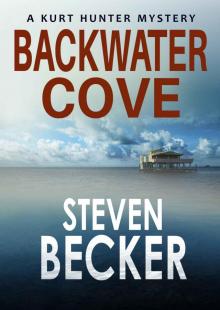 Backwater Cove
Backwater Cove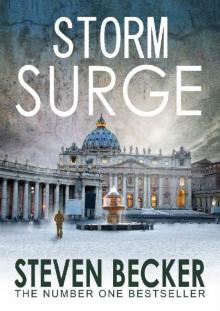 Storm Surge: A Fast Paced International Adventure Thriller (Storm Thriller Series Book 3)
Storm Surge: A Fast Paced International Adventure Thriller (Storm Thriller Series Book 3)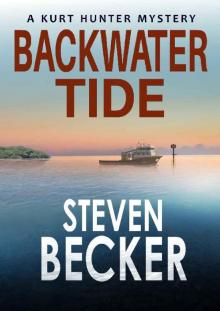 Backwater Tide
Backwater Tide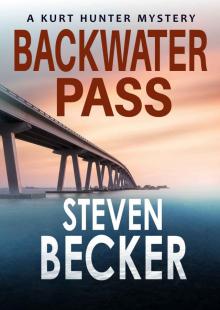 Backwater Pass
Backwater Pass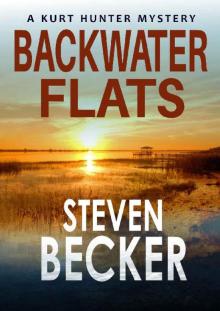 Backwater Flats
Backwater Flats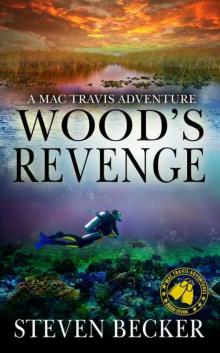 Wood's Revenge
Wood's Revenge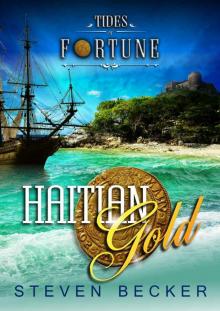 Haitian Gold
Haitian Gold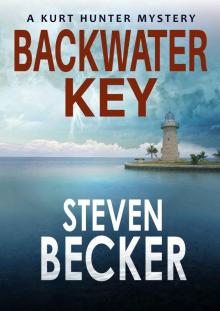 Backwater Key
Backwater Key Wood's Tempest
Wood's Tempest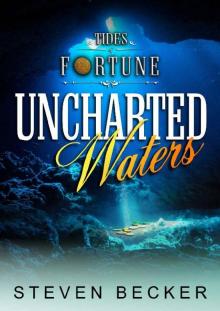 Uncharted Waters
Uncharted Waters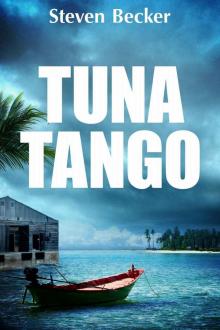 Tuna Tango
Tuna Tango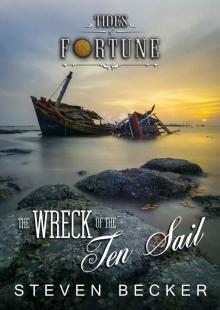 The Wreck of the Ten Sail
The Wreck of the Ten Sail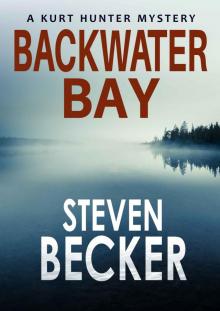 Backwater Bay (Kurt Hunter Mysteries Book 1)
Backwater Bay (Kurt Hunter Mysteries Book 1) Storm Clouds
Storm Clouds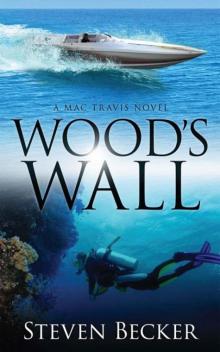 Wood's Wall
Wood's Wall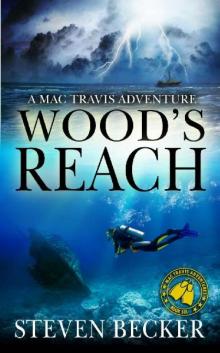 Wood's Reach
Wood's Reach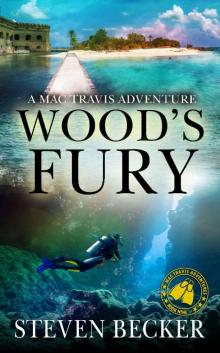 Wood's Fury
Wood's Fury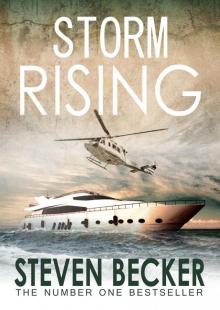 Storm Rising
Storm Rising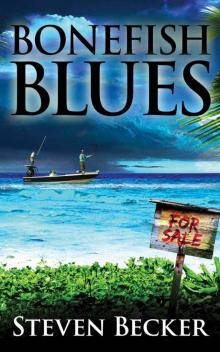 Bonefish Blues
Bonefish Blues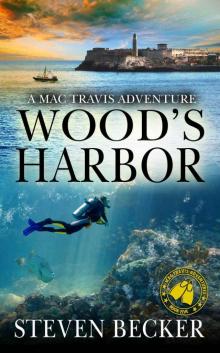 Wood's Harbor: Action & Sea Adventure in the Florida Keys (Mac Travis Adventures Book 5)
Wood's Harbor: Action & Sea Adventure in the Florida Keys (Mac Travis Adventures Book 5)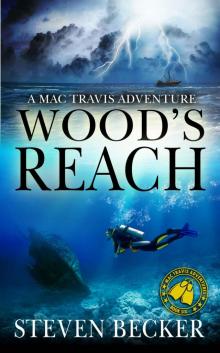 Wood's Reach: Action & Sea Adventure in the Florida Keys (Mac Travis Adventures Book 6)
Wood's Reach: Action & Sea Adventure in the Florida Keys (Mac Travis Adventures Book 6)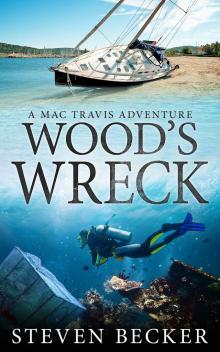 Wood's Wreck
Wood's Wreck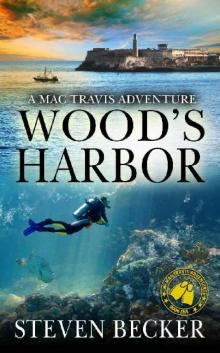 Wood's Harbor
Wood's Harbor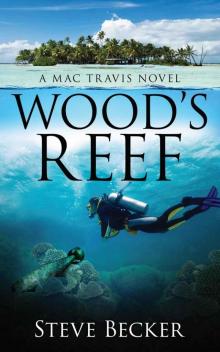 Wood's Reef
Wood's Reef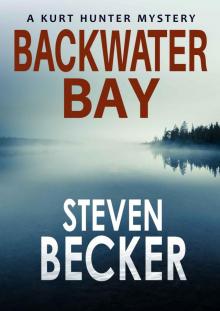 Backwater Bay
Backwater Bay